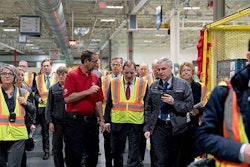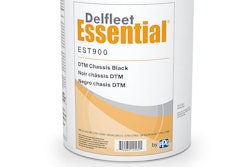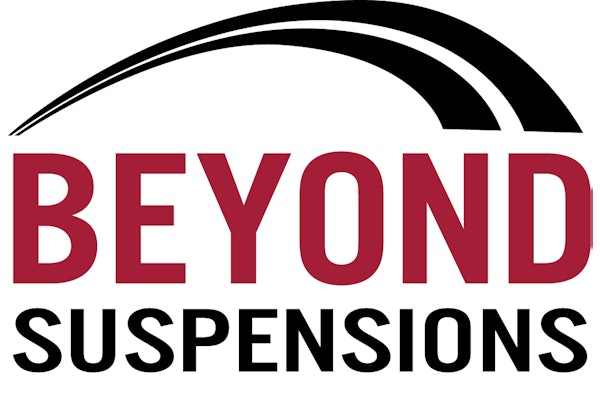Note: This is the second of three articles covering the heavy-duty aftermarket changes between now and 2022. There is no attempt to factor in macro changes in the overall economy. Rather, this series covers 1) Pure vehicle technology, 2) Data science apps likely to make a substantive heavy-duty aftermarket difference and 3) Structural changes in heavy-duty parts and service distribution.
By Bill Wade, Wade & Partners
Welcome to the Transformative Age, an age where the upside of disruption can create limitless opportunities. Like the Information Age before it, and the Industrial Age before that, the Transformative Age’s new platforms and productivity drivers are creating incredible new possibilities. We now live in a cloud-based world and every day we learn of advances in robotics, cognitive technologies and intelligent automation. We have entered a time of the gig economy, millennial mindsets, smart cities, clean energy sources and self-driving vehicles.
How can artificial intelligence (AI) enhance human potential? Do you change your people or change the way your people work? Does cybersecurity only become a priority once you have been attacked?
And what – exactly – is big data technology? Big data describes data sets that are too voluminous and complex for traditional data processing software. Big data challenges include data capture, data storage, data analysis, search, sharing, transfer, visualization, querying, updating and information privacy.
The Transformative Age is the result of a range of new technologies that are fusing the physical, digital and biological worlds while affecting all disciplines, economies and industries. Navigating the Transformative Age demands we ask better questions. I have tried to narrow our discussion to six of the most exciting and most likely-to-be-essential developments to the business by 2022.
Internet of Things (IoT)
More than 9 billion devices are currently connected to the internet. That number is estimated to grow 50 billion in the next five years.
Bolts to seat backs to turbos to tires, the only real limit to the condition-based maintenance (CBM) future is these info sources. Data security will rule as fleets face monitoring and securing products, systems, devices, vehicles, containers and people (see my December article about the ‘Internet of (Truck) Things’).
IoT interfaces, formats, sensors and apps are evolving as mobile computing devices dominate internet connectivity… of people, vehicles, inventory and diagnostic devices. It is estimated that by 2020, mobile connectivity could be accessed by an additional 2.9 billion people.
IoT will be critical for everything from driver-safety monitoring to on-the-road predictive maintenance and freight tracking (down to the individual item).
Synthetic Intelligence / Predictive Maintenance
Synthetic intelligence (SI) is an alternative term for artificial intelligence, emphasizing that the intelligence of machines need not be an imitation or in any way artificial; it can be a genuine form of intelligence.
Machine learning (fed by IoT) and user interfaces such as speech and gesture recognition will advance to increase productivity … think of SIRI and ALEXA as your new countermen.
Key Fleet Predictive (or ‘Condition Based’) Technologies:
- On-Vehicle Communication (Vehicle to Anywhere)
- Multiplex Supply Hose (not chain)
- Diagnostic Force Multipliers
- ‘CU / C me’ Mobile Video
- Expert (decision tree) Systems
- PC and PDA Based Software to analyze J1939 data
This truly is ‘Moneyball Comes to Trucking.’
Blockchain
Simply, a blockchainis like a database. It’s a way of storing records of value and transactions. However, calling blockchain a new type of database is like saying email is a new way of sending letters. Think of Blockchain as a platform.
While it is a database that exists in the Cloud, that doesn’t explain the true genius behind the way it stores records of value and transactions. Where blockchain offers significant potential is in transactions where parties don’t trust each other. There are many instances in trucking where the need to verify stuff is very high (trust but verify).
Examples include:
- Freight brokerage
- Safety and CSA compliance
- Payment transactions
- Fuel/parts/service purchases
- Driver ELD/employment records
- Complicated multi-stop supply chain
- Bills of lading processing
- Factoring
- Truck maintenance records
- Shared assets among different parties
- Asset tracking
- Chain of custody for freight
- Insurance records (vehicles / drivers)
- Claims (freight or warranty)
- Trailer temps / Food safety
- Cross border customs documentation
With the initial hype surrounding blockchain beginning to wane, more companies are developing solid use cases and exploring opportunities for blockchain commercialization. Though a lack of standardization in technology and skills may present short-term challenges, expect broader adoption working toward integrating and coordinating multiple blockchains within a single value chain.
Additive Manufacturing / 3D Printing
The end of inventory? 3D printing could enable unprecedented levels of mass customization and dramatically reduce the cost of supply chains, generating an estimated economic impact of $230 to $350 billion annually by 2020. Future suppliers for a large number of complicated parts may ship only a CAD file and materials spec – online of course.
Additive manufacturing builds up components layer by layer using materials which are available in fine powder form. A range of different metals, plastics and composite materials may be used– recently human body parts (including heart valves) have been created utilizing human cells as the additive material! New tech called Micro Laser-Sintering (MLS) is an additive process for the e-manufacturing of miniaturized parts.
AM has been applied especially in conjunction with rapid prototyping– the construction of illustrative and functional prototypes. Additive manufacturing is now being used in ‘series production.’ It gives OEMs in the most varied vocations the opportunity to create a distinctive profile for themselves based on new customer benefits.
Transport as a Service (TAAS) and Autonomous Vehicles
Would decrease costs to the user, improve utilization of all TaaSproviders (from buses to P&D delivery to heavy haul), reduce city congestion and reduce emissions as more users rely on electric, autonomous vehicles in a TaaS TaaS could also lend itself to newer taxing alternatives, like per mile/weight licensing or platooning/miles tax credits. Major positives of TaaS when seen through the lenses of applied component tech include:
- Saving Lives: Autonomous vehicles can dramatically reduce the frequency of crashes.
- Reducing Cost of Congestion: Autonomous vehicles could also substantially reduce the cost of congestion by increased throughput on roads.
- Reducing Energy Use and Fuel Emissions: A lighter, more efficient delivery vehicle that drives itself to refueling areas could also speed the arrival electric and fuel cell trucks.
- Improving Land Use: TaaS could decrease the dispersion of truck ownership. Fewer parking spaces would be necessary (31 percent of space in the central business districts of 41 major cities is devoted to parking). Changes to HOS laws will weigh heavily here.
‘Reality’ Based Training
The impact of technological changes is shortening the shelf-life of employees’ existing skill sets. Firms can no longer be passive consumers of ready-made human capital. The technologies mentioned above will have huge benefits for many companies – but they will also create huge service challenges. The nature of work will continue to change, and that will require strong education and retraining.
Benjamin Franklin said, “Tell me and I forget. Teach me and I remember. Involve me and I learn.” When the learner is engaged, he becomes more emotionally involved. Virtual and Augmented Reality are two popular trends in the e-learning world.
Virtual reality, or VR, is a three-dimensional, computer generated environment in which a person can explore and interact. This provides an immersive experience as individuals feel they are part of a 3D world and become engrossed in that virtual world. A headgear that offers visual and auditory immersion provides the VR experience.
New learning environments can create courses that teach how to work in dangerous or high-risk environments, work with hazardous materials or perform other complex and high-value activities. VR is particularly useful in safety training, as trainees can experience the consequences of unsafe practices or violation of safety norms.
Augmented Reality or AR is similar to virtual reality in the sense that it provides a simulated environment. However, in AR the context or situation of the learner is included, and relevant information is superimposed. The superimposed visual and auditory information enhances the sensory experience.
AR goes further than the simulated learning VR offers. It creates an immersive, interactive and multi-sensory experience. AR provides training at the point of need and helps learners perform tasks which they have never done before. Like virtual reality, AR can create a safe environment where learners can practice without fear of any harm.
AR presents an exciting way to carry out induction training of new employees by providing an AR introduction to the top management of the company, a virtual tour of company premises and the ability to scan the regulations book with embedded digital content.
Both virtual and augmented reality will become the primary techniques for driver and technician training very soon. It may also become the trade show preference as soon as 2020.
Finally, The Real Next Big Thing Will Come From…
We often hear people talk about the concept of ‘uberization,’ where a new technology completely turns an industry on its head and forces us to rethink the way things have always been done.
With the tremendous intellectual horsepower available today in heavy-duty truck parts and service, it is impossible to know which of the above technologies will develop fastest or for the broadest industry audience.
No industry will remain untouched by these forces. We may be on the cutting edge for a certain amount of time until a newer technology supersedes both business norms and complete industry structures.
Technological change is never an isolated phenomenon. Our truck parts and service revolution is taking place inside a complex ecosystem which comprises OEMs, dealers and independent aftermarket suppliers, distributors, rebuilders, service techs and truck operators worldwide. To prepare this industry for the new type of innovation-driven competition, redesign of our whole ecosystem must be considered.
In Part 3 of this series next week, possibilities for this new ecosystem will be examined.
At least for me, magic and new technology have always walked hand in hand.
Bill Wade is a partner at Wade & Partners and a heavy-duty aftermarket veteran. He is the author of Aftermarket Innovations. He can be reached at [email protected].












